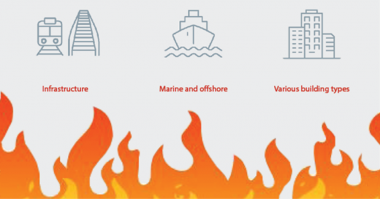Danfoss underscores importance of connectivity and whole building systems as key to doubling energy productivity
At the ninth annual Energy Efficiency Global Forum (EE Global), Danfoss joined with the Alliance to Save Energy and nearly 500 energy-efficiency industry leaders from around the world to advance the productivity and profitability of energy efficiency. The invitation-only event was held May 11-12 in Washington, D.C.
During the plenary panel Doubling Energy Productivity through Government Leadership, John Galyen, president, Danfoss North America, joined Dr. Fatih Birol, executive director, International Energy Agency; Kateri Callahan, president, Alliance to Save Energy; Mark Kenber, CEO, The Climate Group; and Rachel Kyte, CEO, Sustainable Energy for All (SE4All), in a discussion on international efforts to advance energy efficiency and double energy productivity.
“Buildings represent nearly 40 percent of energy consumption and account for about one-third of global greenhouse gas emissions, and, therefore, buildings are vital to achieving our climate and energy goals. To do so, it’s going to require a holistic approach to smart, connected buildings,” said Galyen. “In the short term, we need to implement progressive policies that encourage the use of available, proven energy-efficiency technologies, low-energy building design, and building renovations that can achieve 25-50 percent reductions in energy demand from new and existing buildings. This includes technologies like variable speed, energy recovery, combined heat and power, and renewables.”
“In the long-term, the greatest potential for improving energy productivity will come from smart and sustainable cities with connected infrastructure where water, wastewater, heating, cooling, and electricity are integrated into one system.”
Galyen also noted that the U.S. government, as the country’s largest building owner, can lead by example with its own building stock, and can make it mandatory for tenants and building owners to disclose a building’s energy use and cost — helping to increase awareness, put consumers in command of their energy consumption, and encourage energy-efficiency renovation. Galyen illustrated three examples — one from the U.S., one from Europe, and one from China — where Danfoss solutions were used to achieve significant savings:
- Replacement of 150-ton chiller at U.S. courthouse with chiller with variable speed, magnetic bearing compressors
- Installation of variable frequency drives and use of CHP at wastewater facility in Aarhus, Denmark
- District heating installation in city of Anshan, China
Connected systems were also the topic of focus during one of EE Global’s 16 Executive Dialogue sessions. Mark Menzer, director of public affairs, Danfoss North America, moderated the panel which included panelists Ralph DiNola, CEO, New Buildings Institute; Ken Smith, president and CEO, District Energy St. Paul; Rob Thornton, president and CEO, International District Energy Association; Jim Freihaut, professor of architectural engineering, The Pennsylvania State University; and Fleming Voetmann, head of public affairs and sustainability, Danfoss.
The panelists noted that there are tremendous savings to be realized through the integrated design of efficient systems. Quoting a report from the United Nations Environment Programme (UNEP), Menzer summarized saying, “A transition to district energy systems […] could contribute as much as 58 percent of the CO2 emissions needed by the energy sector to meet the COP21 pledges.”
Commitment to doubling energy productivity
To showcase its commitment to doubling energy productivity, Danfoss announced during EE Global that it would join EP100. EP100 is an initiative of The Climate Group initiative which convenes leading companies that voluntarily commit to double energy productivity in their facilities.
This is the ninth year Danfoss has sponsored EE Global.




